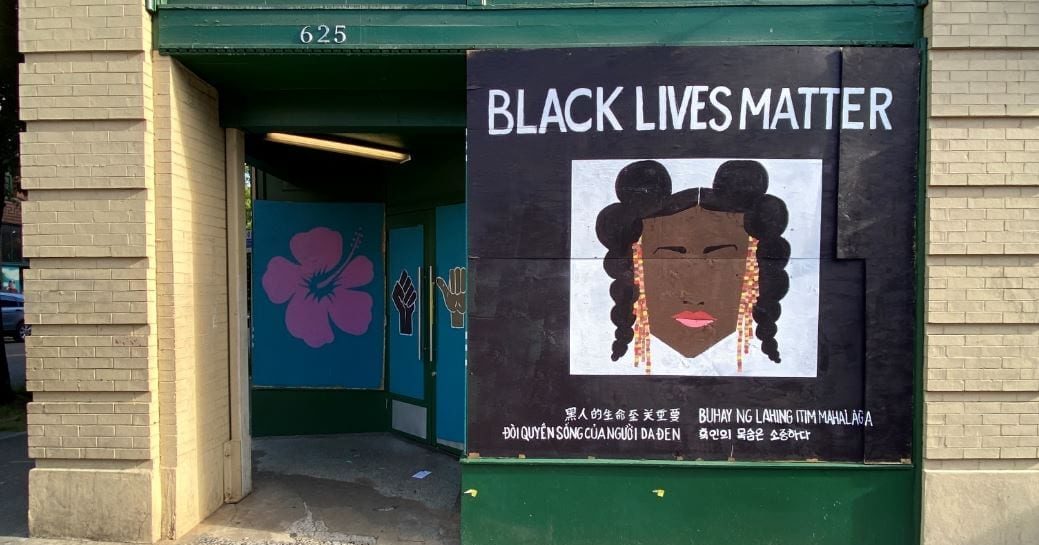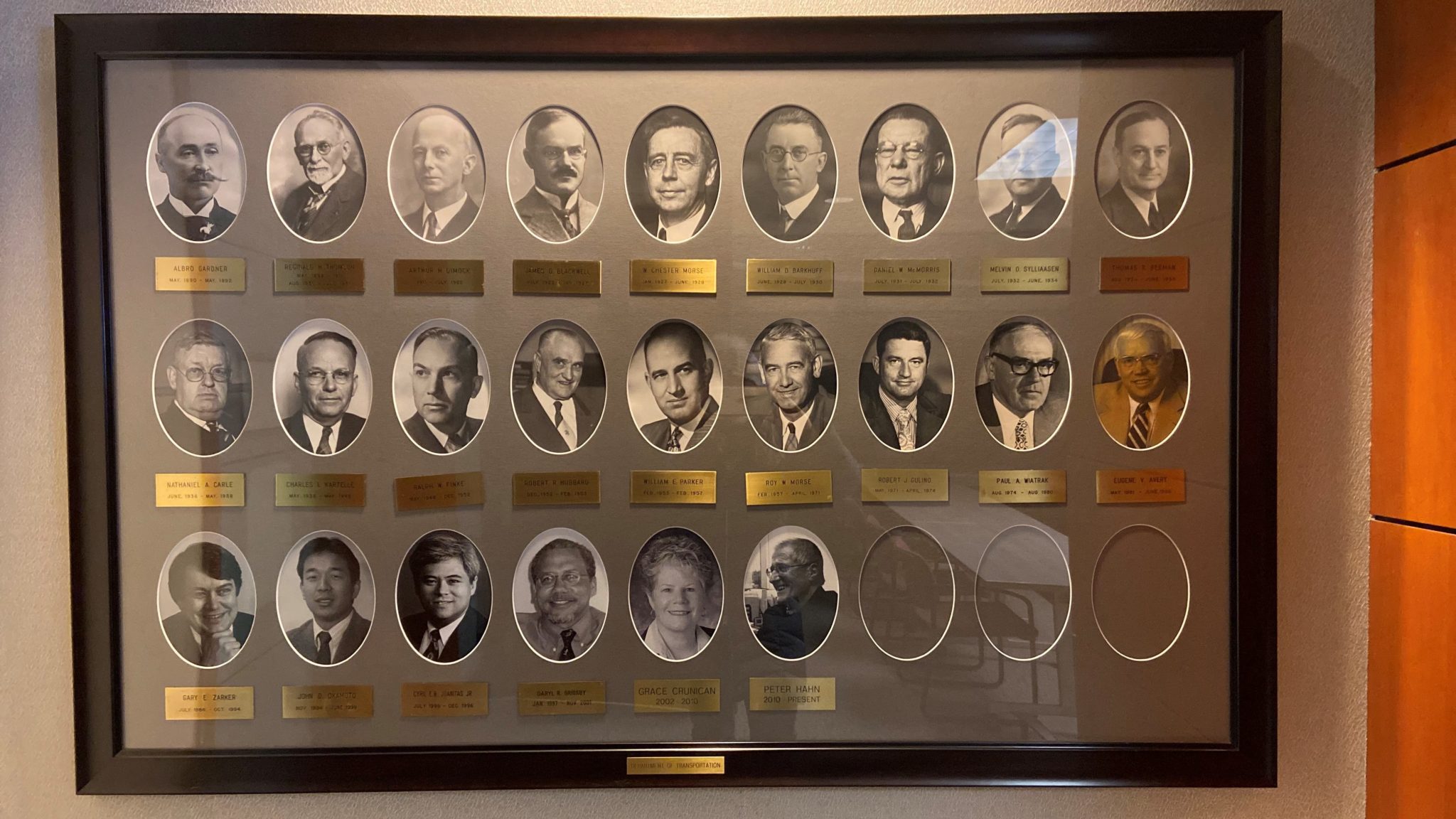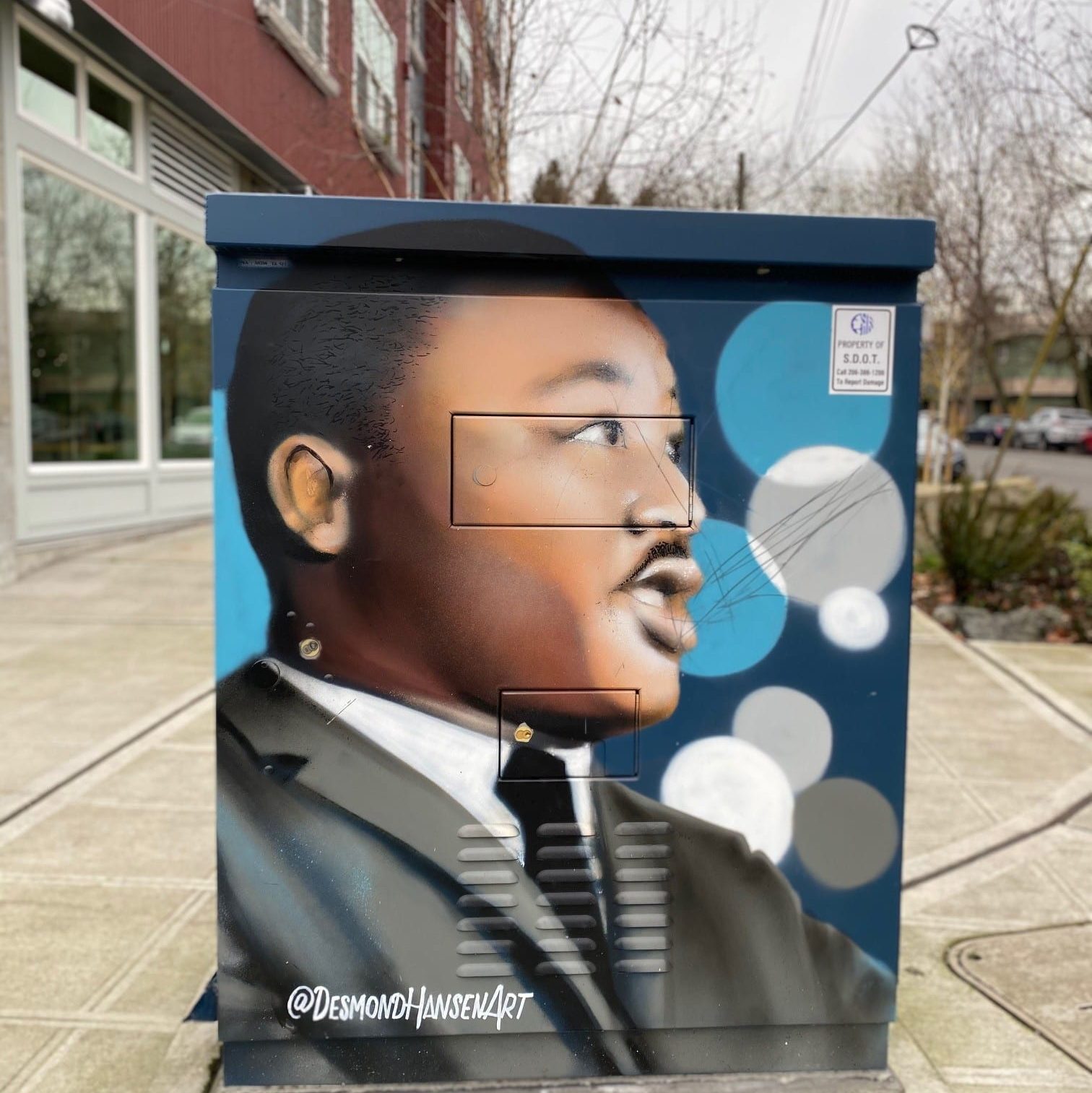 Mural in Seattle’s Chinatown International District. Photo by Casey Rogers on SDOT Flickr.
Mural in Seattle’s Chinatown International District. Photo by Casey Rogers on SDOT Flickr. SDOT is committed to centering Black lives and equity. All year-round we’re working to undo past harms.
This month, Black History Month, we’ll share ways in which Seattle’s transportation has upheld racism and what we’re doing to better serve our Black residents and visitors.
Seattle has a long history of anti-Blackness, a form of racism against Black people that strips people of their humanity and value.
One of the most blatantly racist practices that Seattle had historically allowed was Redlining. Today, the harmful effects of Redlining have created inequitable outcomes for many Black Seattle residents.
Redlining was a way to keep Black and other minority groups from living in white neighborhoods. It wasn’t until 1968 that Seattle City Council passed an ordinance to outlaw racist redlining practices to keep Black people from owning homes in Ballard, Fremont, Queen Anne, and other historically white neighborhoods.
Maps like this one of Seattle were created to show areas that were deemed “hazardous” or “definitely declining” based on the presence of Black and Brown communities living there. As a result, fewer and fewer white people moved there.
Neighborhoods like Seattle’s Central District, which was a predominantly Black neighborhood, were labelled “hazardous” due to deterioration of not only housing, but also the deterioration of streets. There was lack of adequate lighting at night and many other factors that would be considered the City’s responsibility to improve.

Black, Indigenous, and People of Color (BIPOC) communities have been perpetually underrepresented at tables of authority and all levels of government.
In fact, at SDOT, we’ve only had two non-white directors, Jon Okamoto and Daryl Grigsby.
Without adequate representation, BIPOC communities haven’t always seen transportation options and urban spaces that reflect their needs. Instead, they have seen their communities left at the margins of investment and attention.
Seattle’s history still impacts Black and other BIPOC communities today.
- Black people are more likely to be victims of traffic violence;
- The environmental and air quality impacts of our transportation system are more likely to be felt in BIPOC communities and impact generations;
- Climate change will be more acutely felt by communities of color;
- Black people in Seattle are more likely to be targeted by fare enforcement on public transportation;
- Transportation infrastructure in many BIPOC communities, such as sidewalks and transit stops, have been historically under-invested in, and these communities are in turn are limited in their opportunities to recreate safely outdoors or travel to community and cultural hubs, employment opportunities and more;
- “Safe streets” are not safe for all if running-, walking-, or rolling- while Black is perceived as a threat; and the list goes on.

We’re a work in progress.
Over the last few decades, the City of Seattle has been actively working to undo many of the harms BIPOC communities and individuals face every day – and we still have a long way to go.
Much of our efforts are guided by the City’s Race and Social Justice Initiative (RSJI), which was developed as a citywide effort to end institutionalized racism and race-based disparities in City government.
Today in 2021, the current City leadership is one of the most diverse in the history of the City. Half of City leadership identify as a people of color, including six department directors who identify as Black.
Our vision for Seattle and our work to get there is guided by our six values: equity, safety, mobility, sustainability, livability, and excellence.
It’s with great purpose and urgency that we placed equity as our first value. We believe transportation must meet the needs of all communities of all colors, incomes, abilities, and ages. Our goal is to partner with communities to build a racially equitable and socially just transportation system.
When we fail to center Black lives in our transportation mission, our efforts as an agency can not only fall short of correcting, but also risk perpetuating the deep racial inequalities stemming from how we’ve historically planned and built our transportation systems and our communities.
Over the next few weeks, we will share ways that SDOT is working to dismantle institutional racism.
- Money: We’re supporting BIPOC-owned businesses to develop portfolio, gain access to opportunities, and build wealth using the inclusive strategies in SDOT’s implementation of the City’s Women and Minority Owned Business Enterprise (WMBE) program.
- Policy: The Racial Equity Toolkit lays out a process and a set of questions to guide the development, implementation and evaluation of policies, initiatives, programs, and budget issues to address the impacts on racial equity.
- Community: Supporting true, genuine, and authentic community engagement with BIPOC-led communities and centering the work of the Transportation Equity Workgroup.
Check back for the next few Fridays to read our latest Black History Month blog, but know that our communication around these and other issues facing BIPOC communities won’t stop there.
In the meantime:
- Watch: Driving While Black: Race, Space, and Mobility in America (a 2-hour film on PBS)
- Read: SDOT’s own Matthew Howard’s 3-part blog series on race and mobility
- Learn more about the City of Seattle’s Race and Social Justice Initiative (RSJI)